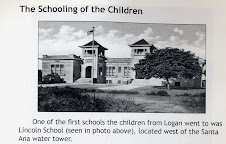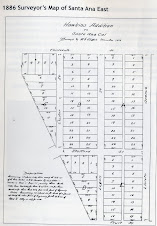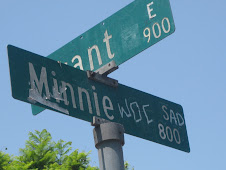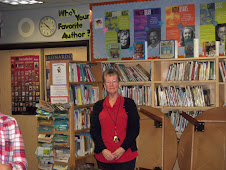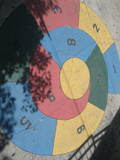

Residents of Logan like where they live. Those who’ve lived there for a long time tend to feel an intense connection to the neighborhood. And although new immigrants who came to Logan within the past few years don’t feel the same degree of emotional attachment, they do share an affinity for the neighborhood, nonetheless.
One family we spoke with has lived in Logan for a little over three years and perceives this as “a good neighborhood to live in.” They know their neighbors, and for the most part, the community is friendly. The family said they feel safe in Logan, and that crime and gang activity aren’t a conern. However, they a

 cknowledged that this had been a risk in the past. Over the past 2-3 years, risks had decreased in the community. Another resident remembered the area as “somewhat infested with gang activity” when she was a child, but said there isn’t much of that anymore. A former resident, who identified himself as a veteran, agreed that gang activity in Logan used to be much worse. This man, now in his seventies, was raised here. The family roots of long-time Logan residents can date back as far as the late-1880s. To many residents, Logan is considered a “sacred ground.”
cknowledged that this had been a risk in the past. Over the past 2-3 years, risks had decreased in the community. Another resident remembered the area as “somewhat infested with gang activity” when she was a child, but said there isn’t much of that anymore. A former resident, who identified himself as a veteran, agreed that gang activity in Logan used to be much worse. This man, now in his seventies, was raised here. The family roots of long-time Logan residents can date back as far as the late-1880s. To many residents, Logan is considered a “sacred ground.”Logan has its own market, places to eat, and a small neighborhood park named after one of its most beloved community leaders. Some time ago, residents told us, the city had a new street plan that would have cut right through the middle of their neighborhood. Residents fought it, and won. That land then became Chepa’s Park. At the center of the community, Chepa’s Park is considered an especially valuable asset, because it stands as a symbol of residents’ strength and resolve to remain in the neighborhood that generations of their families have called home.
A glass half
 full
fullDespite the myriad problems this community has faced in its ongoing resistance to the city’s redevelopment plans, Logan’s longtime residents remain rooted and loyal to their community. Over the years, annual reunions have been held to reunite current residents with former residents and others who have deep roots in Logan. One woman, who like many residents, has lived here all of her life, told us her mother was also born and raised in Logan, and lives here still. She loves the proximity to family and work, and the closeness of the community. The only things she dislikes about the
 community are its industrial areas, particularly the nearby trash company and cremation business. As a neighborhood that some years back became zoned for mixed industrial and residential use, Logan’s industrial areas are seen as a risk to people in the neighborhood, by bringing down property values and quality of life, and by imposing environmental hazards on Logan’s residents. Yet, the residents of Logan like their neighborhood, despite the industrialized areas and problems with the city.
community are its industrial areas, particularly the nearby trash company and cremation business. As a neighborhood that some years back became zoned for mixed industrial and residential use, Logan’s industrial areas are seen as a risk to people in the neighborhood, by bringing down property values and quality of life, and by imposing environmental hazards on Logan’s residents. Yet, the residents of Logan like their neighborhood, despite the industrialized areas and problems with the city.Seeing Logan through “blight”-colored glasses
The views of those w
 ho live in the community differ greatly from the views of outsiders – a category that includes Santa Ana officials, regardless of whether they too live in the city. Logan is a neighborhood that tends to be characterized as “bad” and not ideal to live in. For many years, Santa Ana has been a city seen as “below acceptable standards.” In an effort to change that perception, city officials have launched revitalization plans. However, their efforts to redevelop neighborhoods like Logan risk the loss of its historical and cultural integrity. While outsiders seem to see old neighborhoods like Logan as areas of “blight” that need to be eradicated, residents believe this to be a distorted, stereotyped representation of their community. These opposing views create ongoing tension between Logan and the City of Santa Ana.
ho live in the community differ greatly from the views of outsiders – a category that includes Santa Ana officials, regardless of whether they too live in the city. Logan is a neighborhood that tends to be characterized as “bad” and not ideal to live in. For many years, Santa Ana has been a city seen as “below acceptable standards.” In an effort to change that perception, city officials have launched revitalization plans. However, their efforts to redevelop neighborhoods like Logan risk the loss of its historical and cultural integrity. While outsiders seem to see old neighborhoods like Logan as areas of “blight” that need to be eradicated, residents believe this to be a distorted, stereotyped representation of their community. These opposing views create ongoing tension between Logan and the City of Santa Ana.The Logan community has a history of struggles with the city of
 Santa Ana that are likely to continue. But adversity makes them stronger and, in their unity, they have already influenced legislation affecting their neighborhood. The community’s longtime leader, Josephine “Chepa” Andrade died in 2006, and among her last words to her son was this: “Keep the fight going.” Together with Mr. Romano, Chepa’s long-time friend and co-advocate for Logan, her son is diligently carrying on the fight to keep the Logan neighborhood alive and thriving.
Santa Ana that are likely to continue. But adversity makes them stronger and, in their unity, they have already influenced legislation affecting their neighborhood. The community’s longtime leader, Josephine “Chepa” Andrade died in 2006, and among her last words to her son was this: “Keep the fight going.” Together with Mr. Romano, Chepa’s long-time friend and co-advocate for Logan, her son is diligently carrying on the fight to keep the Logan neighborhood alive and thriving.City of Santa Ana. (2006) Environmental Checklist and Responses. Retrieved August 18, 2009
from http://www.ci.santaana.ca.us/pba/planning/Renaissance_Specific_Plan.asp
Davis Elementary School. Retrieved August 21, 2009 from http://www.sausd.us/davis/site/
St. Joseph Elementary School. Retrieved August 20, 2009 from http://www.stjoesa.org/
Garfield Elementary School. Retrieved August 21, 2009 from http://www.sausd.us/garfield/site/
Santa Ana Unified School District. Retrieved August 22, 2009 from http://www.sausd.k12.ca.us/



